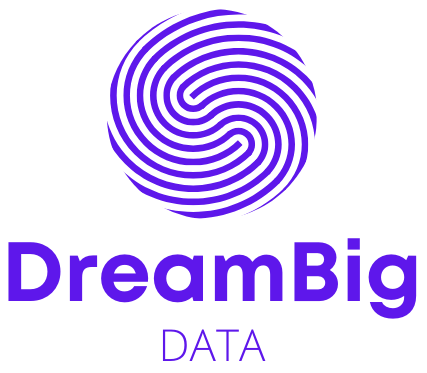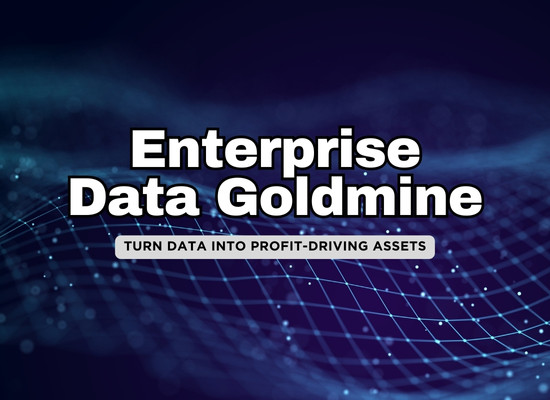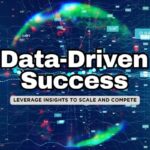In today’s digital economy, data isn’t just an asset—it’s a revenue-generating powerhouse. Enterprises sitting on vast amounts of customer insights, operational metrics, and industry trends are increasingly finding ways to convert raw data into real profits. But monetizing data isn’t as simple as selling reports or licensing datasets. The most successful companies use innovative and strategic approaches that not only drive revenue but also enhance business operations and customer relationships.
Here are seven game-changing data monetization strategies, starting with two that are transforming how businesses capitalize on their data.
1️⃣ Selling Insights-as-a-Service – Turning Data into a High-Value Product
Many companies collect massive amounts of valuable data, but raw data alone is often not useful to external buyers. Instead of selling datasets, companies can package actionable insights and offer them as a premium service. This model, known as Insights-as-a-Service (IaaS), enables businesses to generate revenue by providing data-driven intelligence tailored to specific industries or clients.
Example Scenario
A large e-commerce platform tracks customer buying behaviors, peak shopping times, and product preferences across multiple regions. Instead of selling raw data to brands, the platform creates a subscription-based insights dashboard for vendors. This dashboard provides predictive analytics on trending products, optimal pricing strategies, and seasonal demand forecasts. Brands can use this intelligence to improve inventory management and optimize ad spend, creating a win-win monetization model where the e-commerce company profits while vendors gain competitive insights.
Key Benefits
- Generates recurring revenue through subscription-based insights.
- Enhances client relationships by providing valuable, data-driven decision-making tools.
- Differentiates a business from competitors by offering exclusive intelligence.
2️⃣ Data Sharing Partnerships – Creating New Revenue Streams Through Collaboration
Companies often hold unique, high-value data that can benefit other businesses. Instead of keeping this data siloed, enterprises can form strategic data-sharing partnerships with organizations that can leverage the insights to optimize their own operations. These partnerships can take various forms, including revenue-sharing models, licensing agreements, or co-branded data platforms.
Example Scenario
A major telecommunications provider collects extensive location data from mobile users. By forming a partnership with a ride-sharing company, the telco provides aggregated and anonymized traffic patterns to help the ride-share company optimize driver routing and surge pricing strategies. In return, the telco receives a percentage of the revenue generated from improved ride efficiency, turning passive data collection into an active income stream.
Key Benefits
- Opens up new revenue streams without selling data outright.
- Strengthens industry relationships and creates co-branding opportunities.
- Enables monetization while maintaining data privacy through aggregation and anonymization.
3️⃣ API-Based Data Monetization – Turning Data into a Developer-Friendly Product
APIs (Application Programming Interfaces) allow businesses to package and sell access to their data in a structured, scalable, and developer-friendly format. Instead of selling datasets in bulk, companies can provide on-demand, real-time access through API subscriptions, pay-per-use models, or tiered access plans.
Example scenario: A global financial services firm tracks real-time stock market data, currency exchange rates, and economic indicators. Instead of selling static reports, they launch a data API platform that fintech startups, trading apps, and financial analysts can integrate into their applications. Developers pay a monthly subscription fee based on usage, with premium tiers offering low-latency data feeds and exclusive market forecasts. This model turns their data into a continuous revenue stream while allowing external companies to build innovative financial products.
Key benefits:
- Provides a scalable, recurring revenue model.
- Enhances business value by making data more accessible.
- Creates opportunities for ecosystem partnerships and integrations.
4️⃣ Data-Driven Advertising – Maximizing Revenue Without Selling Data
Many enterprises generate valuable user data that can be leveraged for targeted advertising while maintaining data privacy. Instead of selling customer data directly, businesses can offer privacy-compliant ad targeting solutions where advertisers pay for access to anonymized audience segments.
Example scenario: A popular streaming service collects extensive viewer data, including watch history, genre preferences, and engagement patterns. Rather than selling user data outright, the company creates a premium ad platform that allows brands to target specific audience segments based on viewing behaviors. A fitness brand, for example, can place ads directly within workout-related content, ensuring higher engagement. The streaming service monetizes its data while keeping user information anonymous and protected.
Key benefits:
- Generates revenue without directly selling user data.
- Complies with strict data privacy regulations while offering targeted advertising.
- Increases ad effectiveness, leading to higher advertiser spending.
5️⃣ Data Marketplaces – Selling Data Securely to Verified Buyers
Enterprises with valuable datasets can monetize them through secure data marketplaces, where companies, researchers, and analysts purchase access to structured data. These platforms allow businesses to control pricing, access levels, and compliance while ensuring that sensitive information remains protected.
Example scenario: A multinational retail chain collects massive amounts of anonymized purchasing data, including product trends, seasonal demand patterns, and regional sales fluctuations. Instead of using the data solely for internal insights, the company partners with a data marketplace to sell aggregated consumer trend reports to manufacturers, suppliers, and market analysts. The marketplace handles compliance, transactions, and licensing agreements, allowing the retailer to generate passive revenue from its existing data.
Key benefits:
- Creates an additional revenue stream without requiring a new business model.
- Allows companies to retain control over data access and pricing.
- Ensures compliance with data privacy laws while monetizing insights.
6️⃣ Data Monetization Through AI Models – Enhancing Machine Learning Products
As artificial intelligence continues to evolve, high-quality datasets are becoming increasingly valuable for training machine learning models. Enterprises can monetize their proprietary data by licensing it to AI developers, startups, and research institutions that need accurate, industry-specific data to improve their algorithms.
Example scenario: A healthcare technology company has access to extensive anonymized patient data, including treatment outcomes, diagnostic trends, and medication responses. Instead of selling the raw data, the company collaborates with AI firms developing predictive healthcare models. By licensing its dataset for machine learning training, the company earns revenue while contributing to advancements in AI-driven diagnostics.
Key benefits:
- Capitalizes on the growing demand for high-quality training data.
- Allows enterprises to profit from AI advancements without sharing raw data.
- Creates partnerships with AI firms, expanding market influence.
7️⃣ Internal Data Monetization – Driving Revenue Through Operational Insights
Not all data monetization requires selling information to external buyers. Many enterprises generate significant value by using their own data to optimize operations, reduce costs, and enhance customer experiences. By leveraging advanced analytics, predictive modeling, and automation, companies can turn internal data into profit-driving decisions.
Example scenario: A global airline collects vast amounts of operational data, including flight schedules, passenger booking patterns, and fuel consumption metrics. By analyzing this data with predictive AI, the airline optimizes fuel usage, adjusts dynamic pricing based on real-time demand, and enhances predictive maintenance schedules. These optimizations reduce operational costs by millions annually, improving profit margins without ever selling data externally.
Key benefits:
- Unlocks new revenue streams through internal cost savings.
- Enhances efficiency and customer experience using data-driven decision-making.
- Creates proprietary insights that give a competitive advantage.
Data is one of the most valuable assets in the modern enterprise, but its true potential lies in how it is monetized. From selling insights and forming strategic partnerships to leveraging AI and optimizing internal operations, companies can turn data into a continuous revenue-generating engine.
As businesses refine their approach to data monetization, those that prioritize privacy, compliance, and strategic execution will gain the most from their data assets. Whether through API-based access, AI model training, or internal analytics, the companies that effectively harness their data will drive the future of enterprise profitability.



